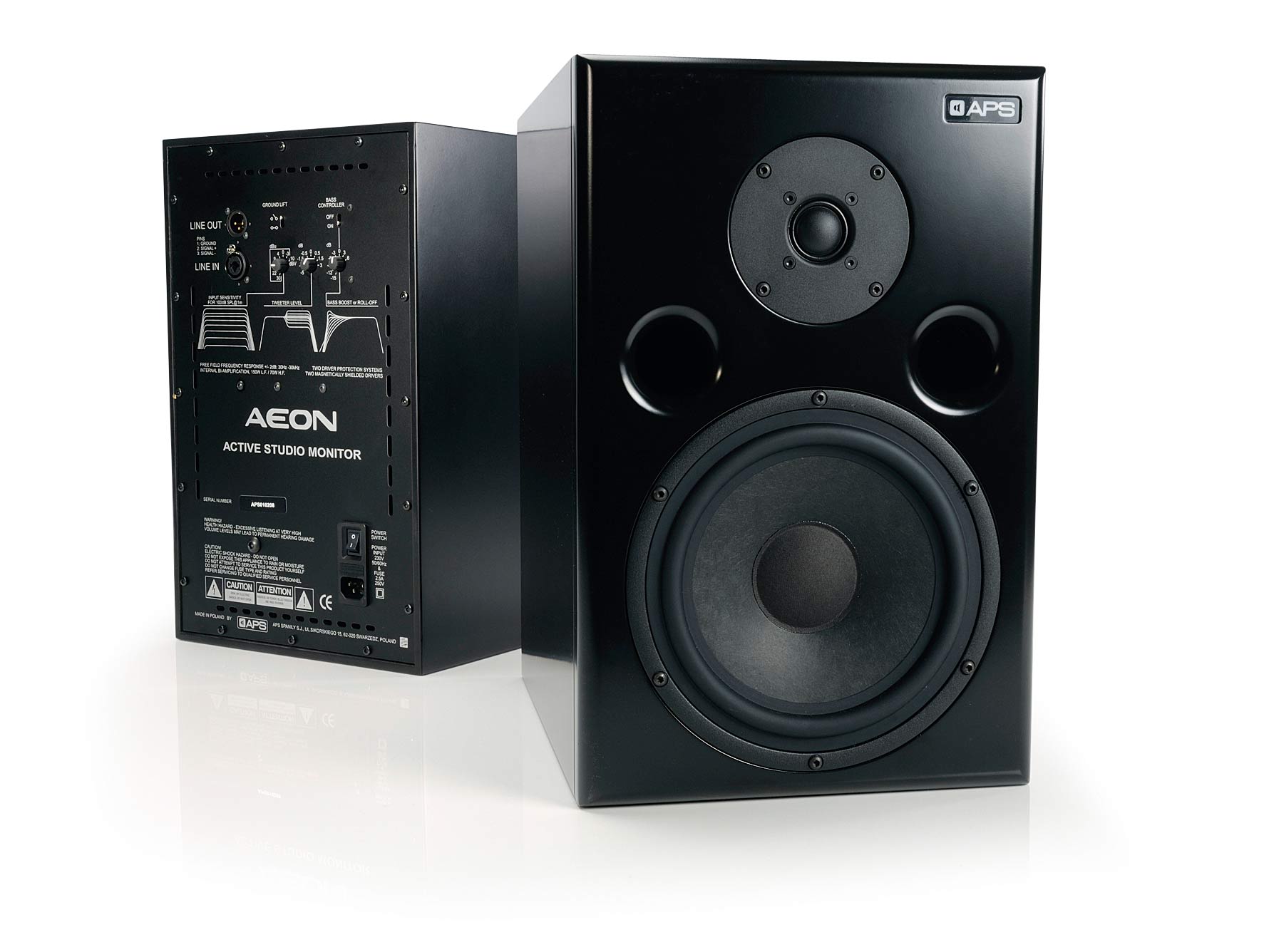MusicRadar Verdict
APS has opened its account with a fine set of mid-field monitors.
Pros
- +
Good solid construction. Attractive introductory price point. Neutral sound.
Cons
- -
A little sensitive to seating position.
MusicRadar's got your back
APS is a small, focused company, manufacturing in Poland. Its business is monitors and studio interconnects.
The Aeon monitors are the company's first serious model and, as such, aren't part of a broader range. However, there is a smaller model, the iO, that's based on the Aeon.
Overview
At 42cm high, the Aeon is a big monitor that's suitable for both near- and mid-field applications. It has a 2-way front-ported design with twin amplification (150 Watts and 70 Watts) driving an 8-inch woofer and 1-inch tweeter. You can choose between fabric and titanium dome tweeters (we tested the fabric one).
Additional features include variable input sensitivity and bass/tweeter level controls (all notched). The input connector is a combined XLR/TRS design and there's also a loop through XLR output. The driver units are also magnetically shield as standard.
The front panel is uncluttered, although there is a two-colour backlit APS badge that indicates operation (blue) and amplifier clipping (red).
The monitors use driver units from Norwegian company SEAS and the crossover (at 1.5kHz) uses Burr-Brown op amps. Finally, there are also twin optical limiters and thermal protection to help prevent any mishaps.
Out of the box these are seriously weighty monitors (18kg apiece), with the amp power transformer and solid MDF cabinet contributing considerably to this bulk. Visually, their scale and mid-positioned reflex ports are reminiscent of Quested's original S8 (their new S8R looks slightly different). However, the Aeon has a more classy satin finish, and you can also choose from a number of different colours.
In use
On first power up and with all trim settings flat, first impressions are of a clear monitor-style flat sound. There's certainly excellent mid-range accuracy, and for a moment you don't really notice that these are mid field monitors.
However, pushing the overall level reveals plenty of power. With flat settings, the bass doesn't feel excessive and this makes you wonder why there are so many bass level cut options (up to -15dB for the bass).
The fabric tweeter version should offer a more natural top end, but on first listening we felt the top end maybe needed a little extra (we tweaked up the rear-panel control by 0.5dB).
Driver choice for this size of monitor often results in a lower crossover point (here it's 1.5kHz) and this should improve imaging. In fact, we actually feel that the Aeon is a little sensitive to seating position. Even so, this doesn't detract that much from our overall impression, which is very positive indeed.
These are clearly very accurate monitors and a great option for mixing or programming. They're not cheap, but nor are they overpriced.
-------------------------------------------------------------------------------------------------------------------
Liked this? Now read: The 11 best DAW software apps and The 11 plug-ins you can't live without
Future Music is the number one magazine for today's producers. Packed with technique and technology we'll help you make great new music. All-access artist interviews, in-depth gear reviews, essential production tutorials and much more. Every marvellous monthly edition features reliable reviews of the latest and greatest hardware and software technology and techniques, unparalleled advice, in-depth interviews, sensational free samples and so much more to improve the experience and outcome of your music-making.
“It is ingrained with my artwork, an art piece that I had done years ago called Sunburst”: Serj Tankian and the Gibson Custom Shop team up for limited edition signature Foundations Les Paul Modern
“Even my cat is disappointed in me”: Deadmau5 gets drunk at Coachella, falls over, is escorted off stage by security, and apologises
“The last thing Billy and I wanted to do was retread and say, ‘Hey, let’s do another Rebel Yell.’ We’ve already done that”: Guitar hero Steve Stevens lifts the lid on the new Billy Idol album











